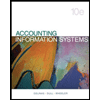
Introduction: GAS is a type of Common computer-assisted audit tool.
This tool is used for mining and analyzing data to detect errors and omissions and collecting proof for audit.
GAS comprises a series of program to read files, select information, calculate, and print reports in a specified format.
It simplifies the task of collecting data and records for the auditors.
Examples of GAS
1) ACL-Audit Command Language
2) IDEA −Interactive Data Extraction and Knowledge
Tasks performed by GAS
1) Selection of data
2) Reporting of data on files
3) Format of testing results in reports
4) Print confirmations
5) Screening and filtering of data
6) Comparison of data and identification of differences
7) Recalculation of data fields
8) Improving efficiency by automation of manual procedures
9) Reduction of risk as it facilitates testing of entire population than only samples
10) GAS helps in documentation of various
To explain: Examples of task performed by GAS
Want to see the full answer?
Check out a sample textbook solution
Chapter 8 Solutions
Auditing: A Risk Based-Approach to Conducting a Quality Audit
 Auditing: A Risk Based-Approach to Conducting a Q...AccountingISBN:9781305080577Author:Karla M Johnstone, Audrey A. Gramling, Larry E. RittenbergPublisher:South-Western College Pub
Auditing: A Risk Based-Approach to Conducting a Q...AccountingISBN:9781305080577Author:Karla M Johnstone, Audrey A. Gramling, Larry E. RittenbergPublisher:South-Western College Pub Pkg Acc Infor Systems MS VISIO CDFinanceISBN:9781133935940Author:Ulric J. GelinasPublisher:CENGAGE L
Pkg Acc Infor Systems MS VISIO CDFinanceISBN:9781133935940Author:Ulric J. GelinasPublisher:CENGAGE L

